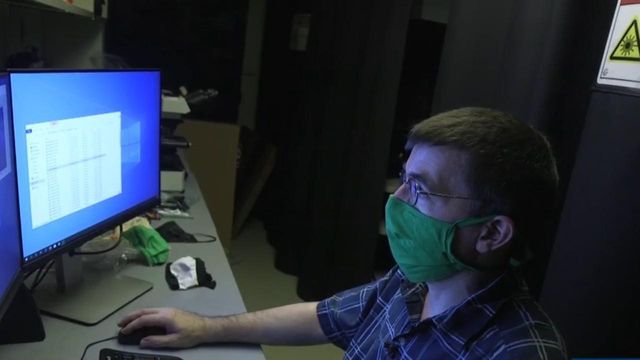Duke researchers put masks, face coverings to the test
How can consumers know how much protection their face covering really offers? A new Duke University study attempts to answer that very question.
Posted — UpdatedThe study conducted at Duke will help not only in the Triangle but all across the country.
Fitted N95 masks performed very well, according to the study, by keeping droplets inside the mask. But some coverings didn’t do so well.
“Stay healthy people,” said Department of Chemistry Associate Research Professor Dr. Martin Fischer. He said that each time while wearing a mask and uttering the phrase as researchers recorded droplets left on each mask.
"We want to make sure you wear a mask that actually works,” Fischer said.
Using a box, a laser, a lens and a cellphone camera, the droplets were recorded. The N95 fitted mask did well when it comes to protection. It sealed droplets and prevented them from leaving the mask.
"The mask that stood out by far is the N95, the true fitted N95 mask," Fischer said.
Fischer also said surgical masks "did a really good job."
Despite testing, the surgical mask didn’t do as well as the N95 because there are some gaps in the mask where droplets can escape. Researchers found that the two-layer cloth mask doesn’t give droplets much room to escape. However, it does not provide a tight seal like the N95.
"The cloth masks were pretty good," said Duke Dr. Eric Westman, an internal medicine physican. "They were pretty well. They blocked most of the particles."
The bandana face-covering did not do well in the study. The researchers said it may look fashionable, but it did very little for protection.
"Because the material is thin, it transmits lots of droplets," Fischer said. "A bandana has lots of gaps."
Lastly, and perhaps most surprisingly, the neck fleece had the highest number of droplets released – more than if no mask were worn. The researchers believe the material breaks larger droplets into smaller particles.
"We put them on, and we saw what looks like more droplets coming out than without a mask," Fischer said.
The Duke researchers said the goal is to help you make an informed decision on which mask you should use to protect yourself.
• Credits
Copyright 2024 by Capitol Broadcasting Company. All rights reserved. This material may not be published, broadcast, rewritten or redistributed.





